As the days shorten and a crispness enters the air, many gardeners experience a bittersweet farewell to their vibrant balcony or patio havens. The end of the gardening season can bring a mix of contentment from a season well-tended and a quiet sadness as we prepare to put our green spaces to rest. This feeling, a touch of melancholy often referred to as the “gardener’s goodbye,” is entirely natural. You are not alone in experiencing a sense of loss when your flourishing outdoor space begins its winter slumber. For many of us, gardening offers more than just fresh produce or beautiful flowers. It provides a profound connection to nature, a meditative escape, and a sense of purpose. When this vital connection seems to fade with the cold, it can leave a void that contributes to the winter blues. However, you can transform this transition into a mindful and restorative process, preparing both your garden and your spirit for the colder months ahead.
This guide helps you navigate the practical aspects of wrapping up your balcony garden while also addressing the emotional impact of the season’s end. We will explore strategies to acknowledge your feelings, engage in mindful cleanup rituals, protect your gardening investments, and cultivate new sources of joy to sustain you until spring. Let’s make this goodbye a meaningful step toward future gardening successes and ongoing well-being.
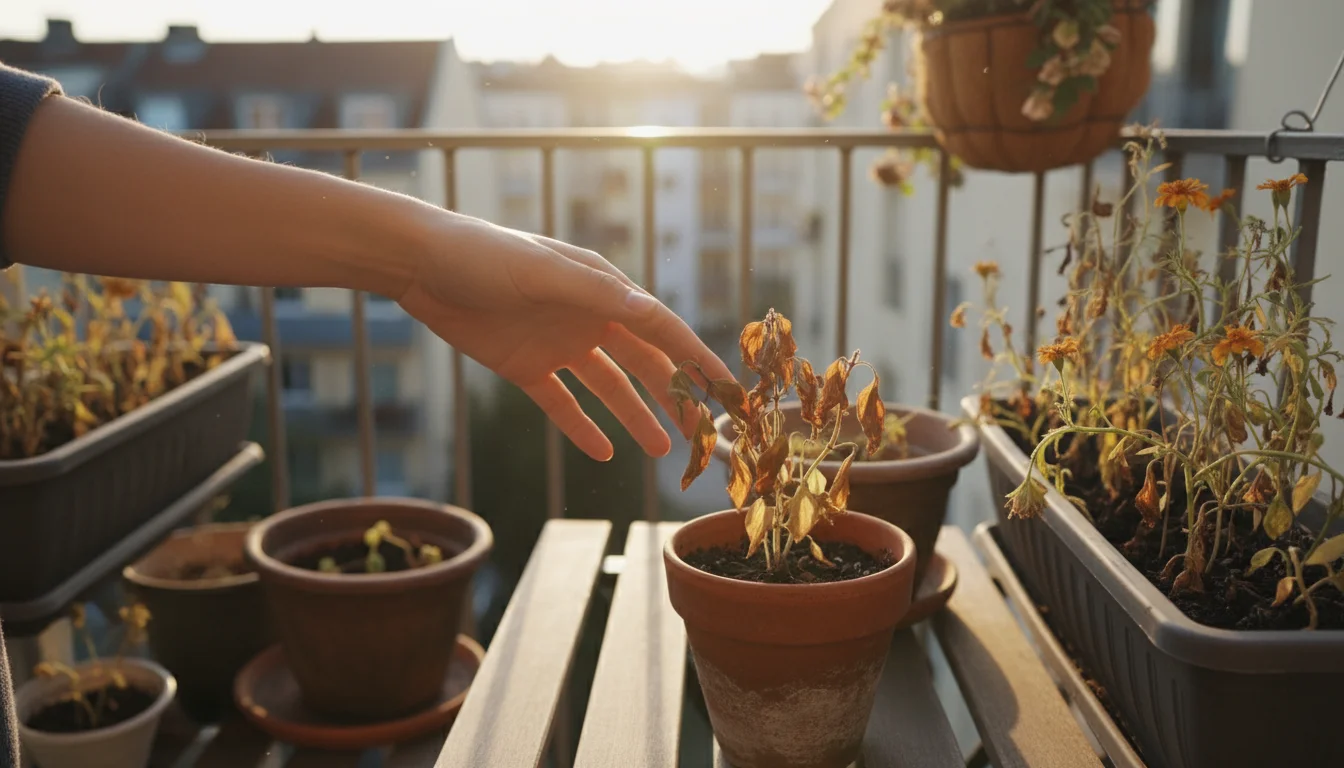
Acknowledging the Shift: Why the End of Gardening Season Hurts
The transition from a bustling, green balcony to a quiet, dormant space can be emotionally challenging. You invest so much time, energy, and hope into your garden, watching tiny seeds sprout into thriving plants. This intimate connection fosters a sense of accomplishment, calm, and joy. Research consistently shows that gardening significantly boosts mental well-being, reducing stress, anxiety, and symptoms of depression. A 2017 meta-analysis published in the Journal of Public Health indicated gardening activities are associated with improved mental health, reduced depression and anxiety, and increased life satisfaction. When the daily rituals of watering, pruning, and harvesting cease, it feels like losing a comforting routine and a beloved companion. This sense of loss is a natural human response to change and the absence of something meaningful.
Recognizing these feelings is the first step toward managing them. Many gardeners experience a mild form of seasonal affective disorder, SAD, or the more general winter blues as daylight hours decrease and outdoor activities diminish. The end of gardening season often amplifies these feelings. Instead of dismissing your sadness, acknowledge it. Tell yourself, “It is okay to feel this way. My garden brought me immense joy, and I am grieving its temporary departure.” This validation helps you process your emotions rather than suppress them, paving the way for a more positive transition. Engaging in mindful activities during this period transforms feelings of melancholy into a sense of completion and anticipation for the next growing cycle. This deliberate approach to closing your garden allows you to savor the memories and appreciate the lessons learned, preparing your mind for the winter ahead.
Your connection to nature does not disappear when the leaves fall. It simply changes form. By actively participating in the seasonal transition, you honor the cycle of growth and rest, deepening your understanding of nature’s rhythms. This mindful approach to the end of gardening season becomes a powerful tool for your mental health, transforming a potentially sad period into one of reflection, planning, and renewed energy.

The Mindful Cleanup: Practical Steps for a Respectful Goodbye
Approaching your fall garden cleanup as a mindful ritual, rather than a mere chore, shifts your perspective. Each task becomes an opportunity to reflect on the past season, appreciate your efforts, and prepare for the future. This “mindful fall garden cleanup” allows you to connect with your space one last time, expressing gratitude for the bounty it provided. It is not about rushing through tasks, but about performing each action with intention and presence.
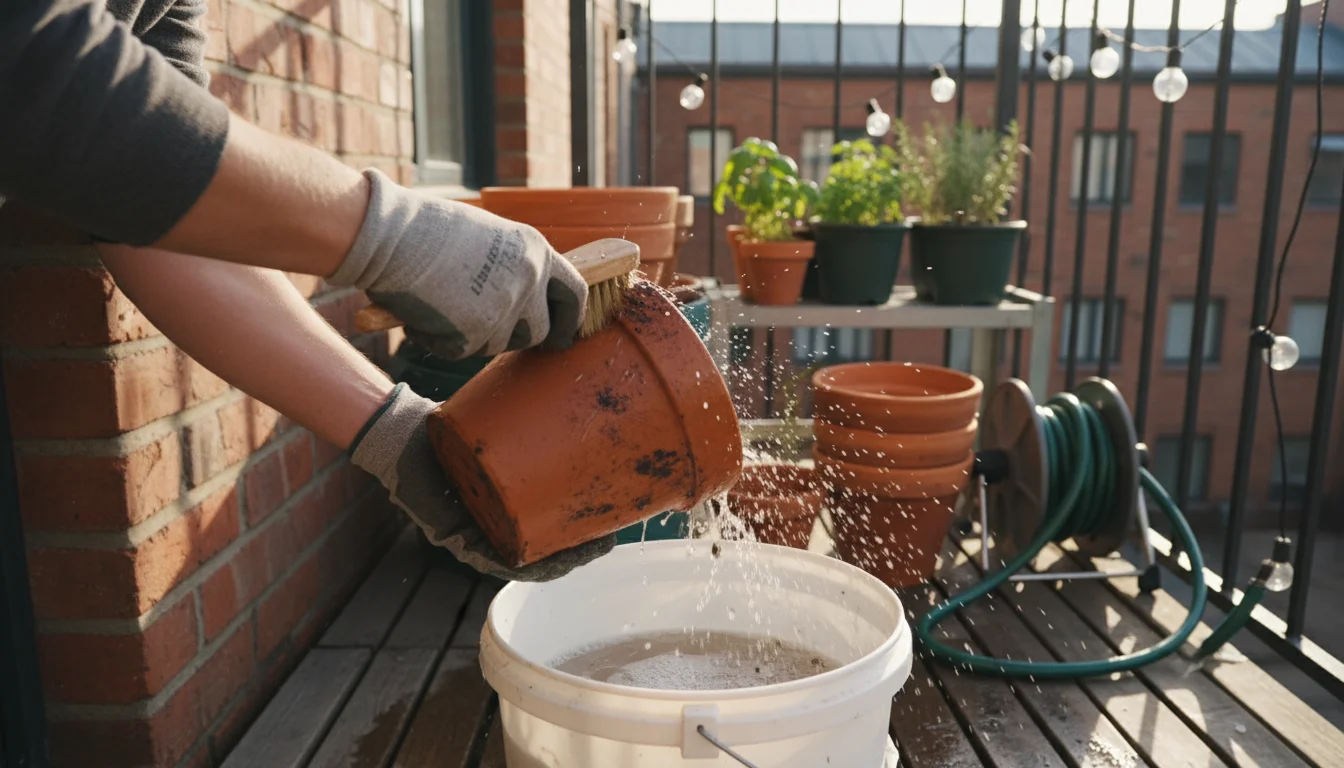
Step-by-Step Mindful Cleanup
- Empty and Clean Containers: Begin by removing any spent annuals or dead plants from your pots. If plants were diseased, dispose of them in the trash, not your compost, to prevent spreading pathogens. For healthy plants, add spent foliage and roots to your compost pile. Empty the old soil into a designated area for rejuvenation or discard it if heavily depleted or diseased. Clean your empty containers thoroughly. Use a stiff brush to remove caked-on soil or mineral deposits. A solution of one part bleach to nine parts water effectively sanitizes plastic and terracotta pots, preventing disease carryover. Rinse them well afterward to remove any bleach residue. Cleaning containers now saves you time and effort in spring, and prevents pests and diseases from overwintering.
- Tend to Perennials and Shrubs: For hardy perennials or small shrubs in containers, assess their winter needs. Some benefit from a light pruning of dead or leggy growth. Consider insulating their roots by wrapping the pots in burlap or bubble wrap, especially in colder climates. Move these containers to a more sheltered location if possible, protecting them from harsh winds and extreme temperature fluctuations.
- Clean and Store Tools: This is a crucial step for extending the life of your gardening equipment. Remove all soil and debris from trowels, pruners, and cultivators. A stiff wire brush works well for this. Wipe down metal surfaces with an oily rag or apply a light coat of horticultural oil to prevent rust. Sharpen blades on pruners and shears, ensuring clean cuts for next season. Store tools in a dry, protected place. Proper tool care is an investment in your gardening future and a testament to your mindful approach.
- Inspect and Store Ancillary Items: Gather stakes, trellises, watering cans, and any other gardening accessories. Clean them, repair any damage, and store them neatly. Rolling up hoses and bringing them indoors prevents cracking in freezing temperatures. Empty watering cans completely to avoid ice damage.
Each of these practical tasks offers a chance to reflect. As you empty a pot, remember the first tiny sprout you nurtured. While cleaning a tool, recall the satisfying work it helped you accomplish. This intentional engagement transforms mundane chores into meaningful acts of closure, preparing you emotionally for the garden’s pause. You are not just cleaning, you are honoring the season and preparing for new growth.

Protecting Your Assets: Winterizing Containers and Tools
Beyond cleaning, proper winterization protects your investment in gardening supplies, ensuring they last for many seasons. This proactive approach saves you money and time in the spring, allowing you to focus on planting instead of replacing damaged items. Understanding how different materials react to cold is key to effective storage.
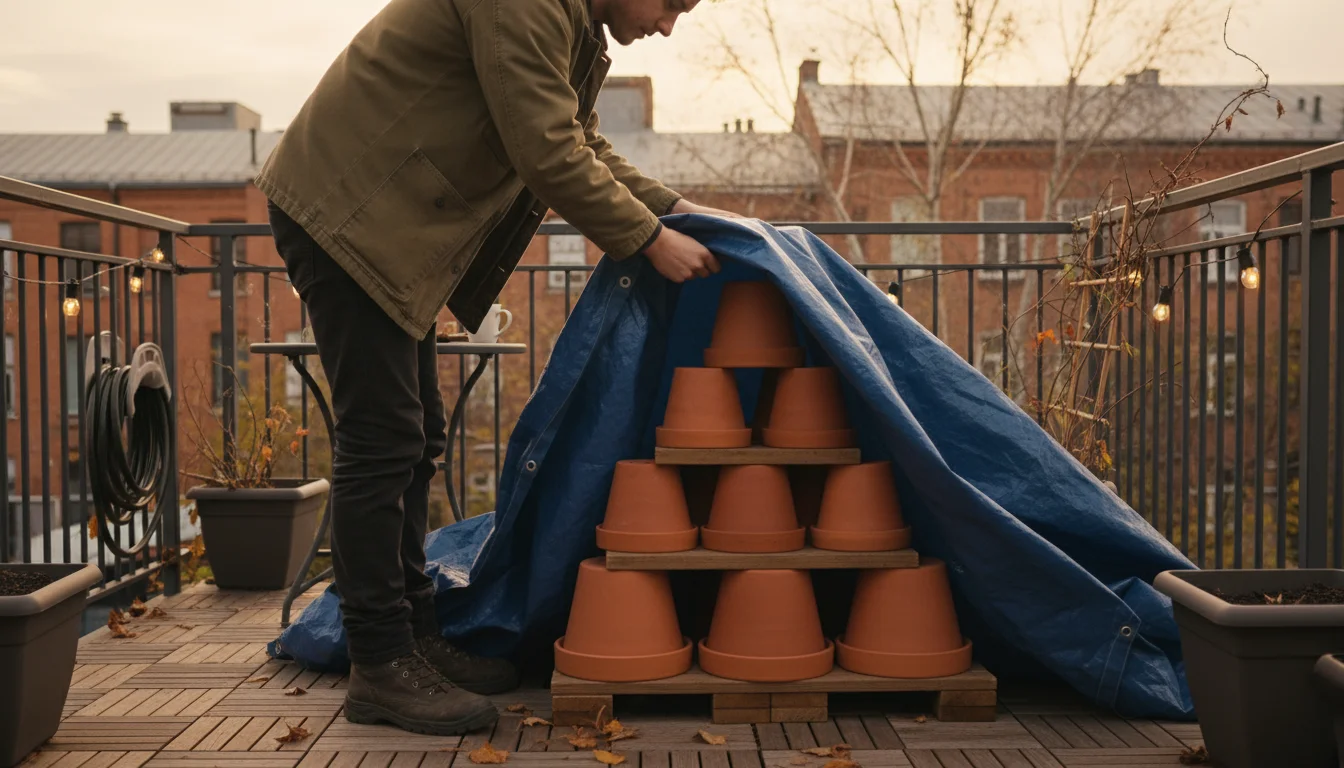
Winterizing Your Containers
The type of material your containers are made from dictates their winter care:
- Terra Cotta and Ceramic Pots: These materials are porous, meaning they absorb water. When temperatures drop below freezing, any absorbed water expands, causing the pots to crack or even shatter. To prevent this, thoroughly clean these pots and allow them to dry completely. Store them indoors in a garage, shed, or basement. If indoor storage is not feasible, stack them upside down on blocks or bricks to allow for drainage, and cover them with a tarp to protect them from rain and snow.
- Plastic Pots: Most plastic pots are more durable and can withstand freezing temperatures, but extreme cold can make them brittle. Clean them as you would terracotta pots. You can leave them outdoors, but consider stacking them and placing them in a sheltered area, such as against a house wall or under an overhang, to minimize exposure to harsh elements. Storing them out of direct sunlight can also extend their life by preventing UV degradation.
- Wood Planters: Wooden containers can rot if they remain constantly wet. Ensure they are thoroughly cleaned and dry. If they are small enough, bring them indoors. For larger wooden planters that must stay outside, elevate them on pot feet to improve drainage and air circulation underneath. Applying a fresh coat of sealant or exterior wood stain can also offer additional protection.
- Fabric Grow Bags: These are surprisingly resilient. Empty them, wash them thoroughly, and allow them to air dry completely to prevent mold or mildew. Fold them neatly and store them indoors or in a dry, sheltered outdoor location. Their flexible nature makes them easy to store.
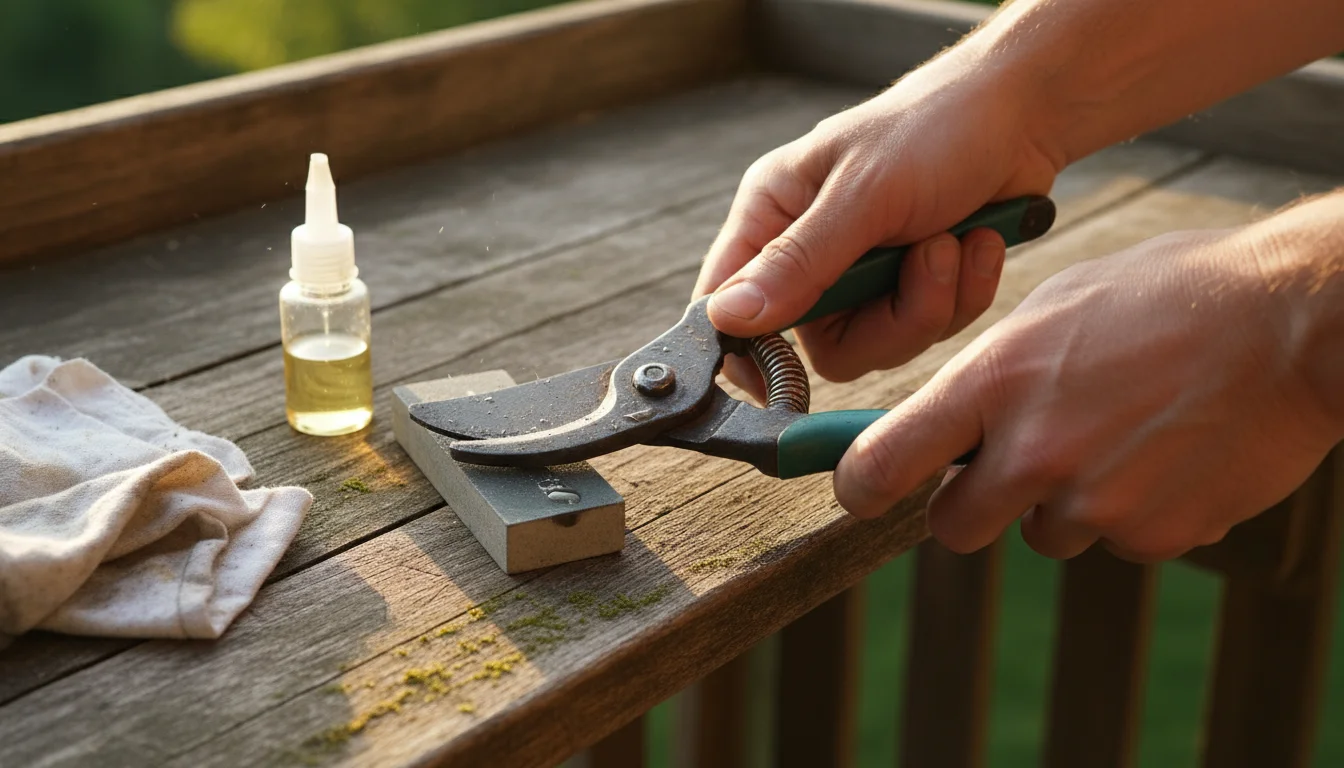
Maintaining Your Tools
Your gardening tools are an extension of your hands. Proper care ensures they serve you faithfully. After cleaning soil and debris, inspect all tools for wear and tear. Sharpen pruners, loppers, and shears using a sharpening stone or file. Sharp tools make cleaner cuts, reducing plant stress and making your work easier. Lubricate moving parts with a few drops of lubricating oil, like 3-in-1 oil or even vegetable oil, to prevent rust and ensure smooth operation. Wooden handles benefit from a light sanding and a rubdown with linseed oil to prevent cracking and splintering. Store tools neatly on hooks or in a toolbox, keeping them away from damp environments. This diligent attention prolongs their lifespan significantly.
By dedicating time to these winterization steps, you not only preserve your gardening equipment but also reinforce your connection to the practice. Each carefully cleaned pot and oiled tool becomes a tangible link to the joy and productivity of the past season, and a promise of what is to come.
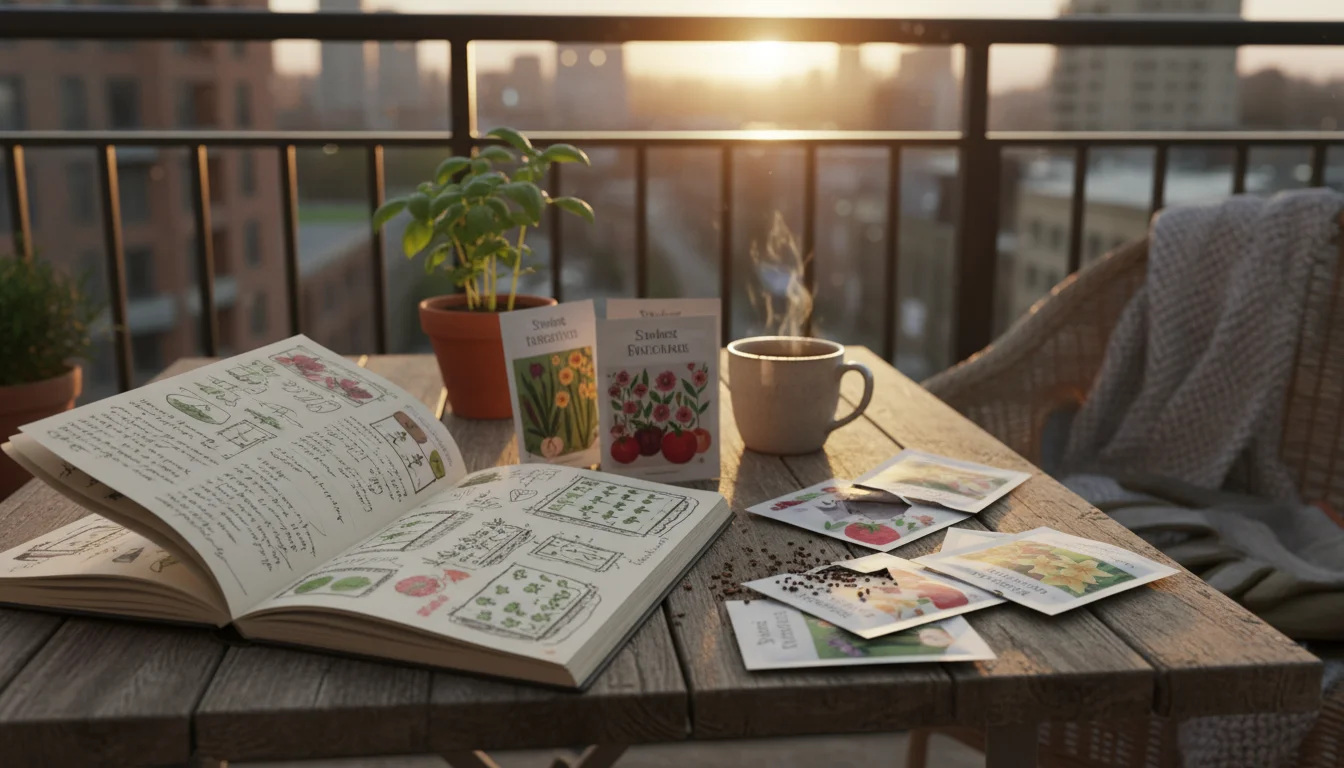
Planting Seeds of the Future: Planning and Preserving
Even as your balcony garden enters its dormant phase, your gardening journey continues. The end of gardening season offers a perfect opportunity to look back, learn, and plan for an even better next year. This is a time to embrace sustainable practices, nurturing not just your plants but also the soil and your future gardening endeavors. Engaging in these activities helps you mentally prepare for winter garden months by shifting your focus from present loss to future possibilities.

Saving Seeds for Next Season
Seed saving is a deeply satisfying and eco-friendly practice. It connects you directly to the life cycle of your plants, preserves unique varieties, and saves money. For many annuals, like calendula, cosmos, marigolds, and even some peppers or beans, collecting seeds is straightforward. Wait until the seed pods or fruits are fully mature and dry on the plant. Gently harvest them, separate the seeds from any chaff, and allow them to dry thoroughly indoors for a few weeks to prevent mold. Store your dried seeds in airtight containers, such as small envelopes or glass jars, in a cool, dark, and dry place. Label them clearly with the plant type and the date of harvest. This small act of preservation extends your garden’s legacy and provides a delightful head start for spring planting.
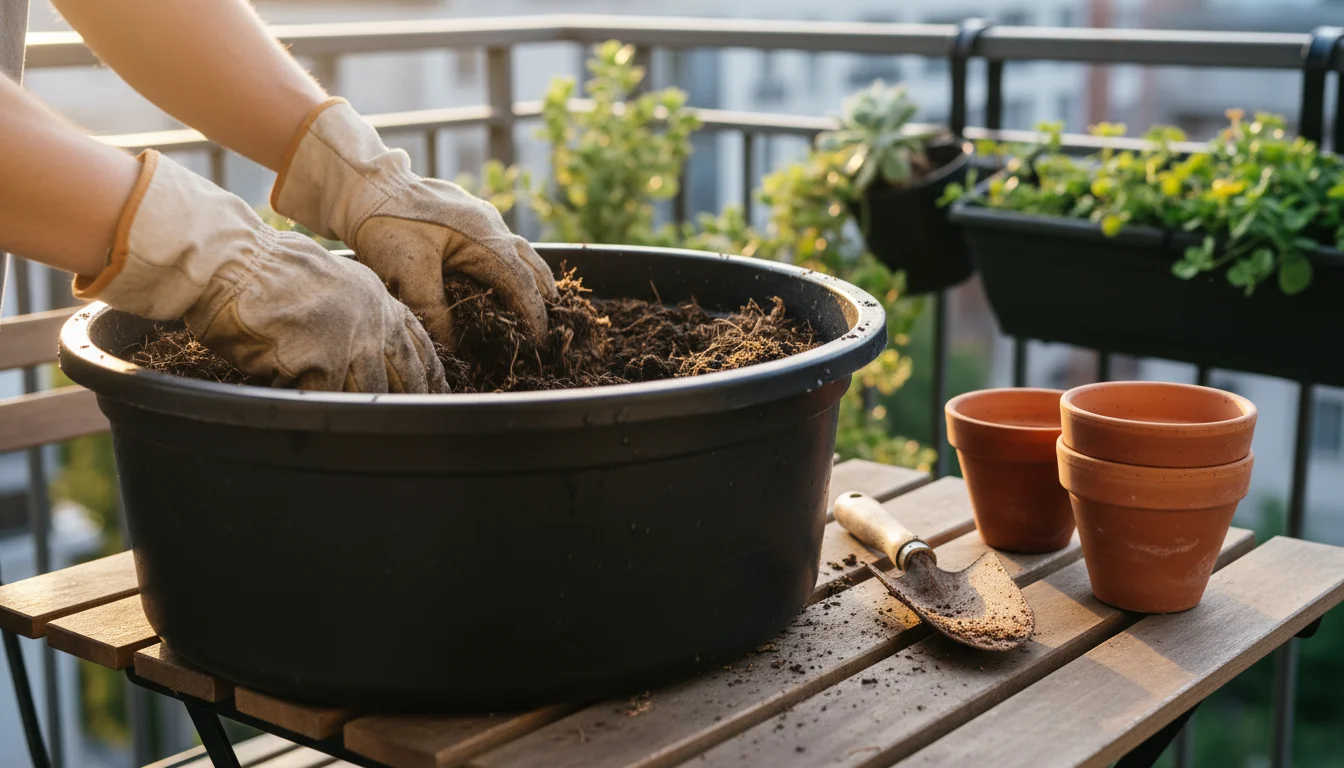
Rejuvenating Your Container Soil
After a season of intense growth, your container soil is likely depleted of nutrients. Simply reusing it without amendment is a recipe for lackluster results next year. Instead, consider this an opportunity for “soil renewal.” Empty your old potting mix into a large bin or dedicated area. Mix it with fresh compost, worm castings, or a balanced slow-release organic fertilizer. A good general ratio is about 2 parts old soil to 1 part fresh compost or new potting mix. This process revitalizes the soil structure, replenishes essential nutrients, and reintroduces beneficial microorganisms. This proactive approach ensures your plants next year have a rich, fertile foundation for robust growth.

Beginning Your Fall Garden Journal
Now is the ideal time to start a fall garden journal, or to add final entries to your existing one. This valuable tool is more than just a record. It is a repository of your gardening wisdom and a powerful aid for “gardening for mental health.” Document what worked well this season: which plants thrived, what pest issues you encountered, and which varieties you enjoyed most. Note down specific dates for planting, harvesting, and any notable weather events. Include your successes, challenges, and even your feelings about the season. Your journal becomes a personalized guide for future planting decisions and a cherished memory book. Reflecting on your gardening journey, you gain a deeper appreciation for your efforts and the natural world. This active reflection helps manage the sense of loss at the “end of gardening season” by reinforcing the continuous learning and growth inherent in gardening.
By engaging in these forward-looking activities, you transform the traditional “end of gardening season” into a vibrant phase of planning and preparation. You are not saying a final goodbye, but rather a thoughtful “until we meet again,” fortified by knowledge and anticipation.

Your Fall Garden Journal: A Companion Through the Quiet Months
The act of journaling can be incredibly therapeutic, especially during the transitional period after the gardening season ends. A fall garden journal becomes your personal companion, helping you process the season’s conclusion and offering a creative outlet during the colder months. This is a powerful strategy for “gardening for mental health” and a practical way to prepare for the spring. It is not about writing perfect prose, but about honest reflection and thoughtful planning.

What to Include in Your Fall Garden Journal:
- Season Review: Dedicate a section to reviewing the past growing season. List the plants you grew, noting their performance. Which varieties excelled on your balcony? Which struggled, and why? Document any pest or disease issues, and what methods you used to address them. This historical data is invaluable for making informed decisions next year.
- Harvest Records: Keep a record of your harvests. What did you grow, and how much? This provides a tangible sense of accomplishment and helps you understand your garden’s productivity. For example, knowing you harvested 3 pounds of cherry tomatoes from two plants can guide your planting numbers next season.
- Weather Observations: Note significant weather patterns. Was it an unusually hot summer? Did you experience late frosts? These observations can influence your choice of plants and planting times for the following year.
- Design Ideas and Wish List: This is where your creativity truly shines. Sketch out new balcony layouts. Research plants you want to try next year, considering their sun requirements, mature size, and compatibility with your small space. Create a wish list of seeds, tools, or accessories. This forward-thinking activity keeps your gardening spirit alive.
- Emotional Reflections: Do not shy away from documenting your feelings. How did gardening make you feel? What were your greatest joys, and your biggest frustrations? Acknowledge the “feeling sad when gardening season is over.” Writing these emotions down helps you process them, offering a sense of release and understanding. For example, you might write, “I feel a bit melancholy seeing my basil go, but I am so proud of the pesto I made all summer.”
- Seed Inventory: If you saved seeds, list them in your journal, noting the date collected and any specific observations about the parent plant. This helps you track what you have on hand and what you need to purchase.
Engaging with your fall garden journal provides a tangible connection to your garden, even when it is dormant. It transforms abstract memories into concrete lessons and future plans. This active process of reflection and anticipation is a crucial component of “how to mentally prepare for winter garden” challenges. By focusing on learning and looking forward, you maintain a positive outlook and continue to cultivate your passion.
You can use a simple notebook, a dedicated gardening diary, or even a digital document. The format matters less than the act of recording and reflecting. This practice ensures your gardening experience is a continuous journey of growth, both for your plants and for yourself.
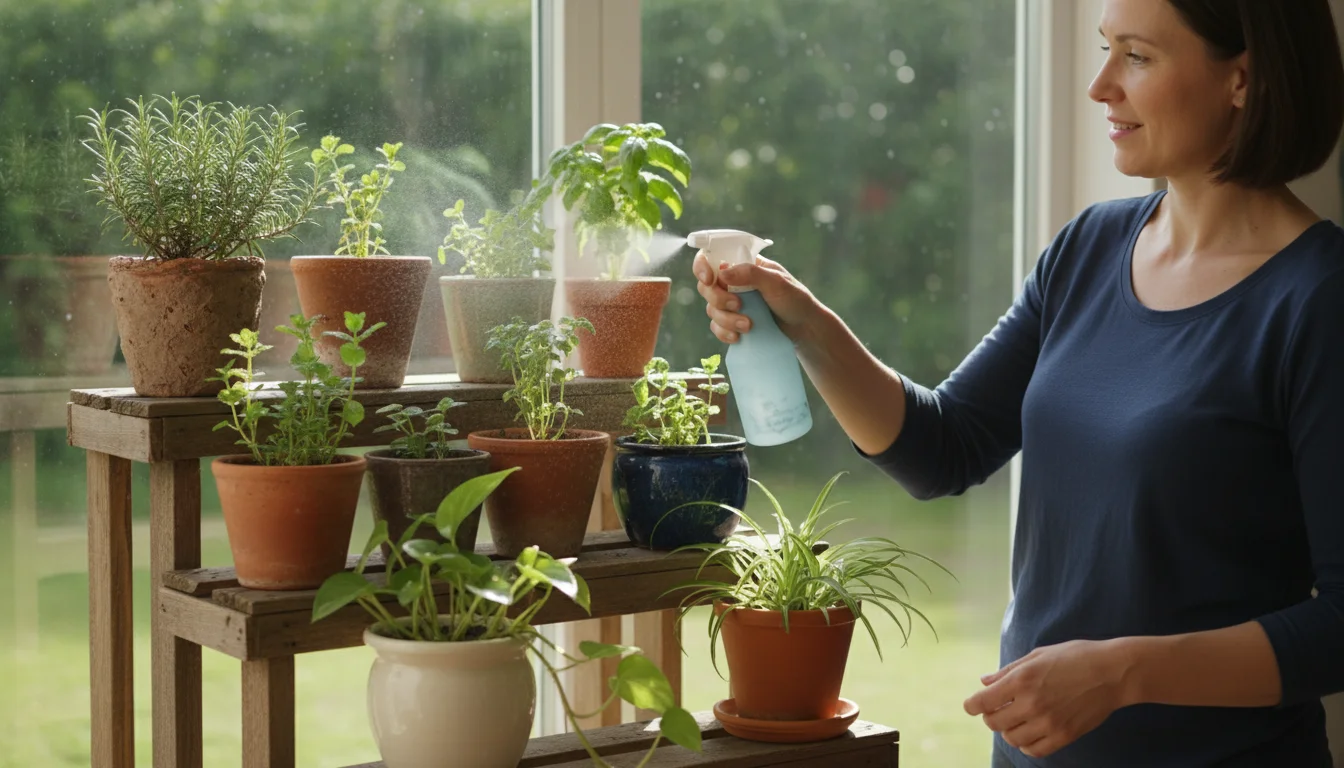
Cultivating Indoor Joy: Keeping Your Green Thumb Active
As outdoor gardening activities slow down, you might find yourself missing the daily interaction with plants. This is a common aspect of “feeling sad when gardening season is over.” Fortunately, you do not have to put your green thumb away for the winter. Transitioning some of your gardening energy indoors can be a powerful antidote to the “winter blues” and an excellent way to continue experiencing the benefits of “gardening for mental health.” Indoor gardening provides a continuous connection to living greenery, purifying your air and brightening your living space.
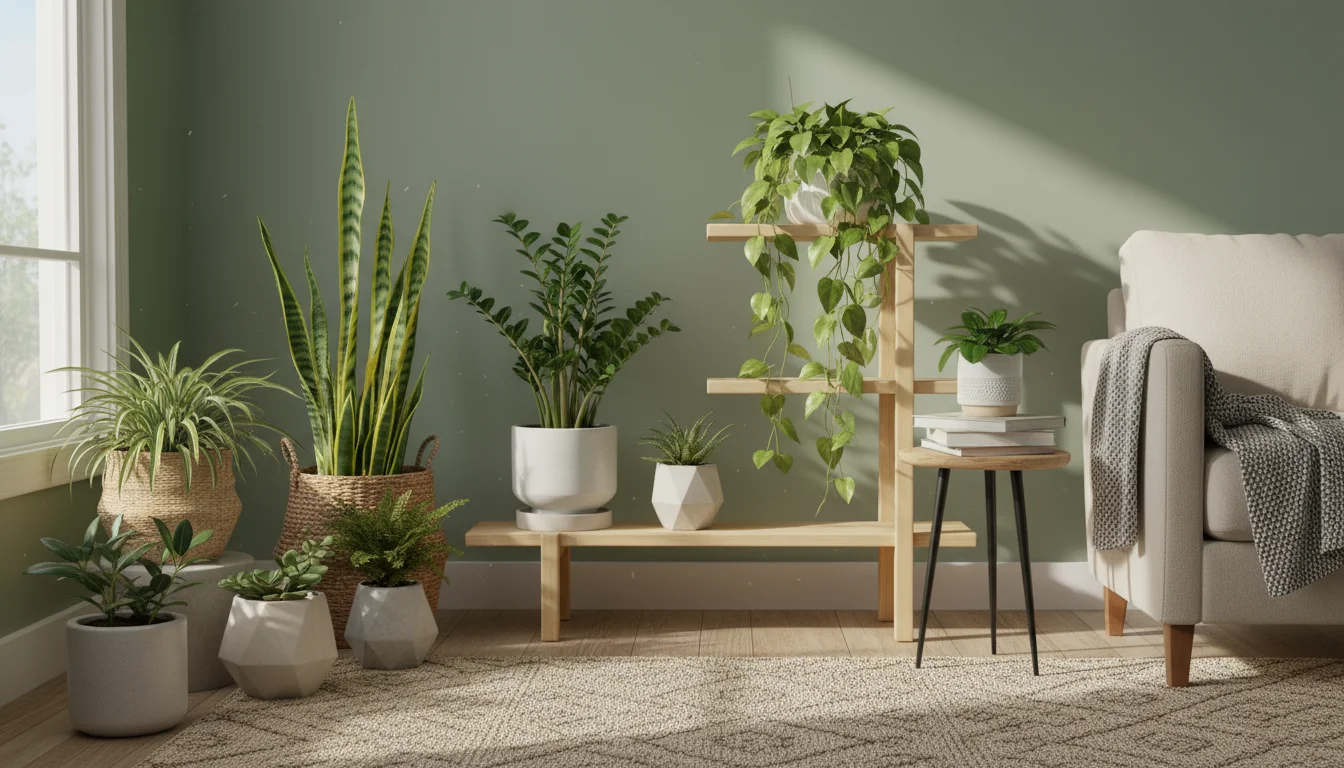
Embracing Houseplants
Houseplants offer year-round beauty and a living presence. If you do not already have them, now is an ideal time to introduce some to your home. Choose plants suited to your indoor conditions, considering light levels and humidity. Low-maintenance options for beginners include:
- Snake Plant (Sansevieria trifasciata): Tolerates low light and infrequent watering, making it incredibly forgiving. It also excels at air purification.
- ZZ Plant (Zamioculcas zamiifolia): Extremely drought-tolerant and thrives in a range of light conditions, from low to bright indirect light.
- Pothos (Epipremnum aureum): A versatile vining plant that adapts to various light levels and is easy to propagate, offering a continuous source of new plants.
- Spider Plant (Chlorophytum comosum): Produces charming “plantlets” that are easy to root, providing a fun propagation project.
Caring for houseplants provides a gentle, consistent routine, offering the same meditative benefits as outdoor gardening. Observing new leaves unfurl or a plant recovering from a minor issue provides a tangible sense of connection and accomplishment.
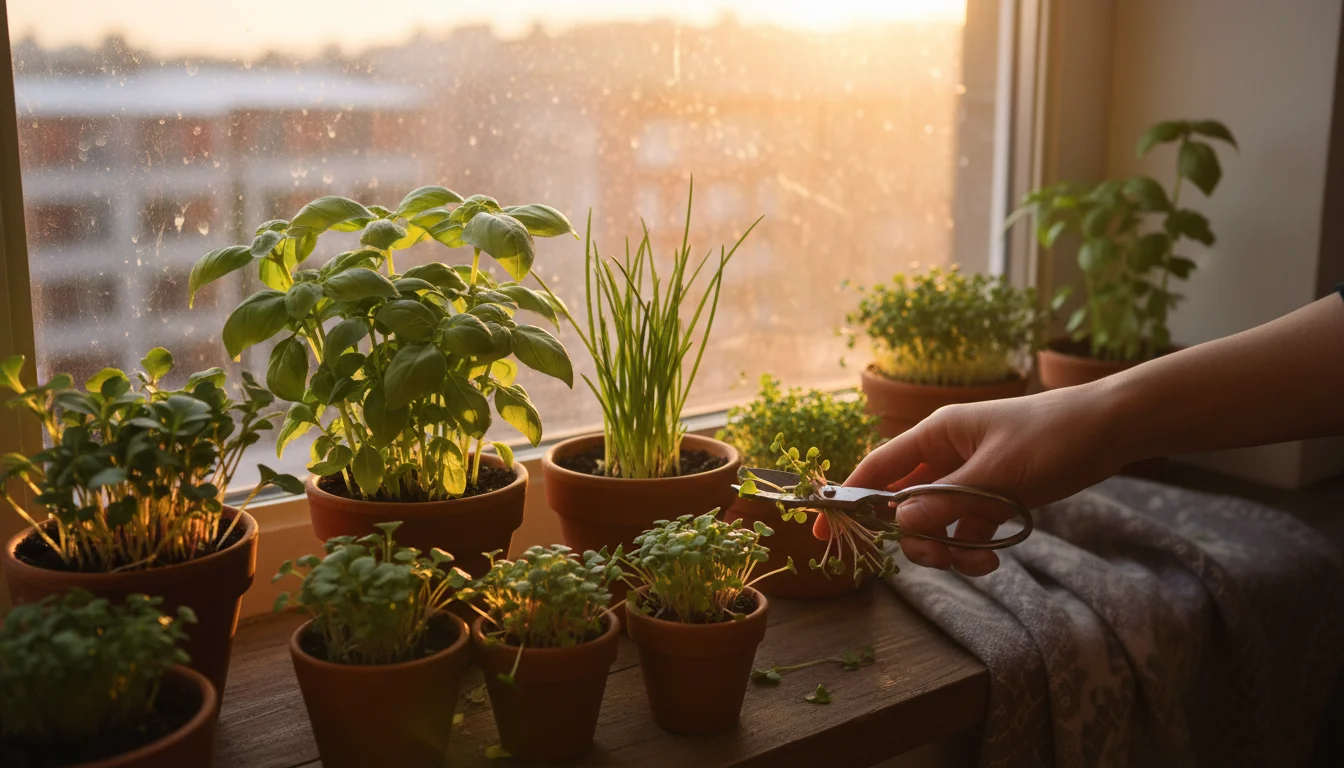
Growing Microgreens and Herbs on a Windowsill
For those who miss the taste of fresh harvests, a windowsill garden is a fantastic solution. Microgreens, such as radish, broccoli, or arugula, grow quickly and require minimal space. You can harvest them in just 1-3 weeks, providing a continuous supply of nutritious greens. Similarly, many herbs, like basil, mint, chives, and cilantro, can thrive indoors with adequate light. Place small pots on a sunny windowsill, provide consistent moisture, and enjoy fresh flavors throughout the winter. Growing your own food, even in small quantities, offers a sense of self-sufficiency and a direct link to nature, significantly alleviating the “winter blues.”
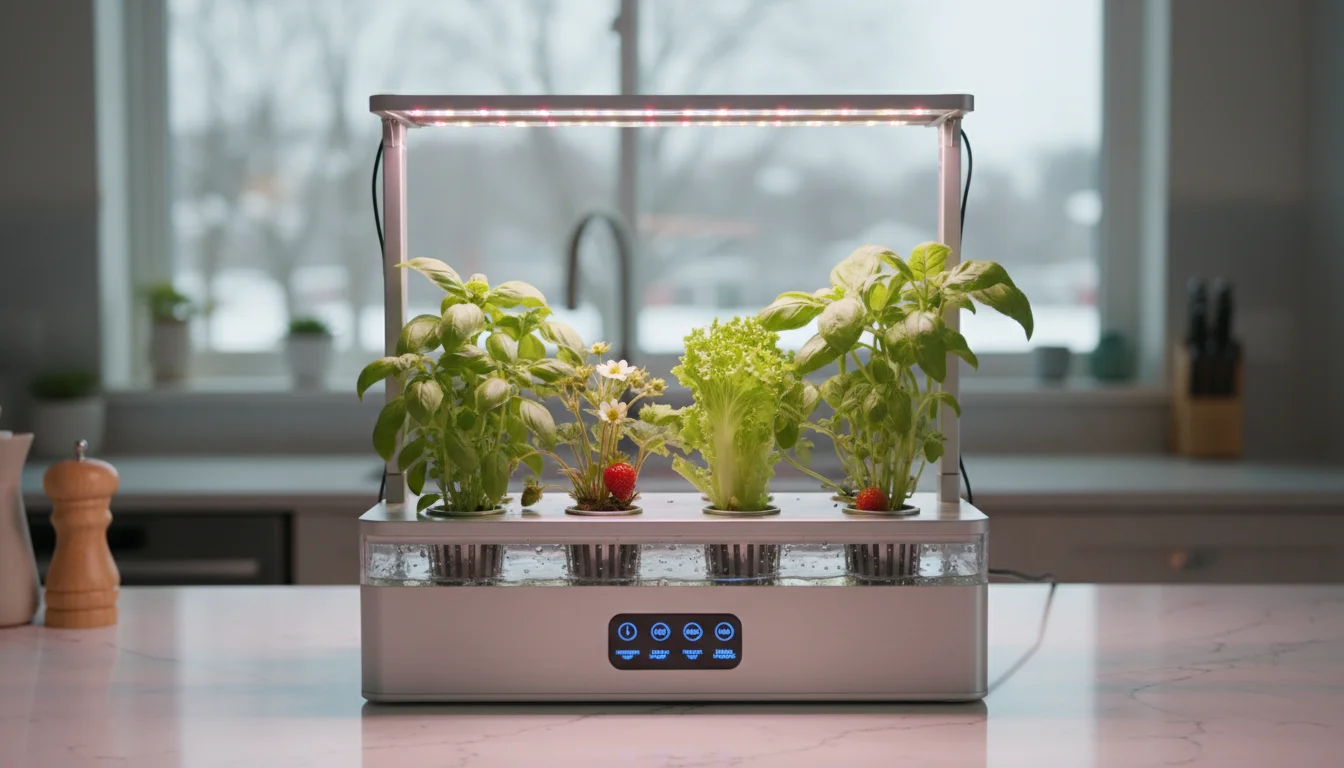
Hydroponic Kits for Small Spaces
Consider small hydroponic kits for a more high-tech indoor gardening experience. These compact systems allow you to grow herbs, lettuce, and even small fruits like strawberries without soil, using nutrient-rich water. They are clean, efficient, and often come with integrated grow lights, making them perfect for limited spaces and providing fresh produce even in the darkest months. The continuous growth and lush greenery offered by these systems can be profoundly uplifting, effectively combating any feelings of sadness or loss from the outdoor season’s end.
By shifting your gardening focus indoors, you maintain your connection to living plants, enjoy fresh produce, and continue to benefit from the mental health advantages of nurturing something green. This active engagement ensures your gardening joy does not end with the fall chill but merely transforms, waiting to burst forth again in spring.
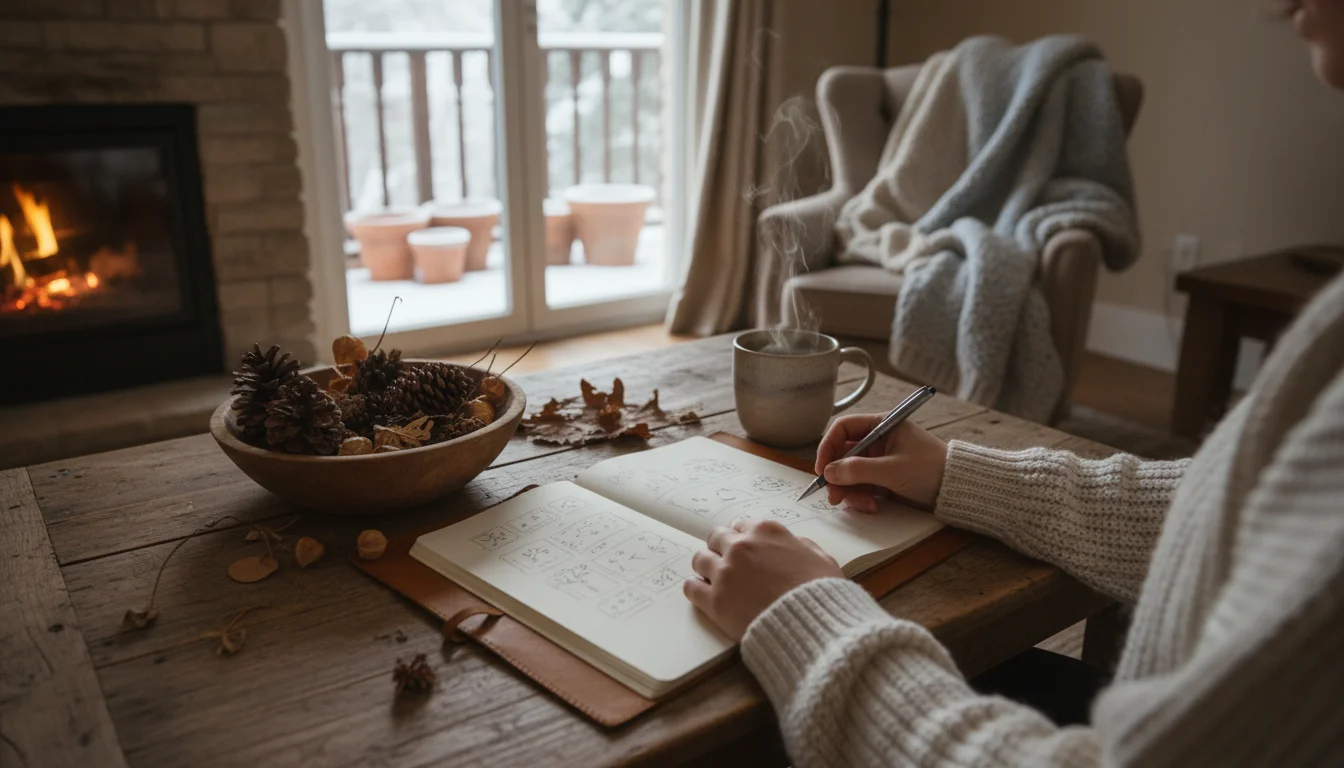
Beyond the Balcony: Holistic Strategies to Beat the Winter Blues
While cultivating plants indoors offers a direct way to keep your green thumb active, addressing the “winter blues” or the “feeling sad when gardening season is over” requires a multi-faceted approach. Your well-being extends beyond the confines of your balcony garden. These holistic strategies help you maintain mental fortitude and connect with nature, even when your outdoor space is dormant.

Stay Connected to Nature
Even without an active outdoor garden, you can find ways to interact with the natural world. Take regular walks in local parks or natural areas, observing the beauty of dormant trees and the subtle signs of winter life. Pay attention to the crisp air, the sounds of birds, and the textures of bark and bare branches. This mindful engagement helps reinforce your connection to the Earth’s cycles. Consider bird feeders on your balcony to invite wildlife to your space, offering a dynamic and engaging natural spectacle to observe from indoors. A study published in Ecological Psychology highlighted that observing birds can significantly reduce stress and anxiety, reinforcing the link between nature exposure and positive mental health.
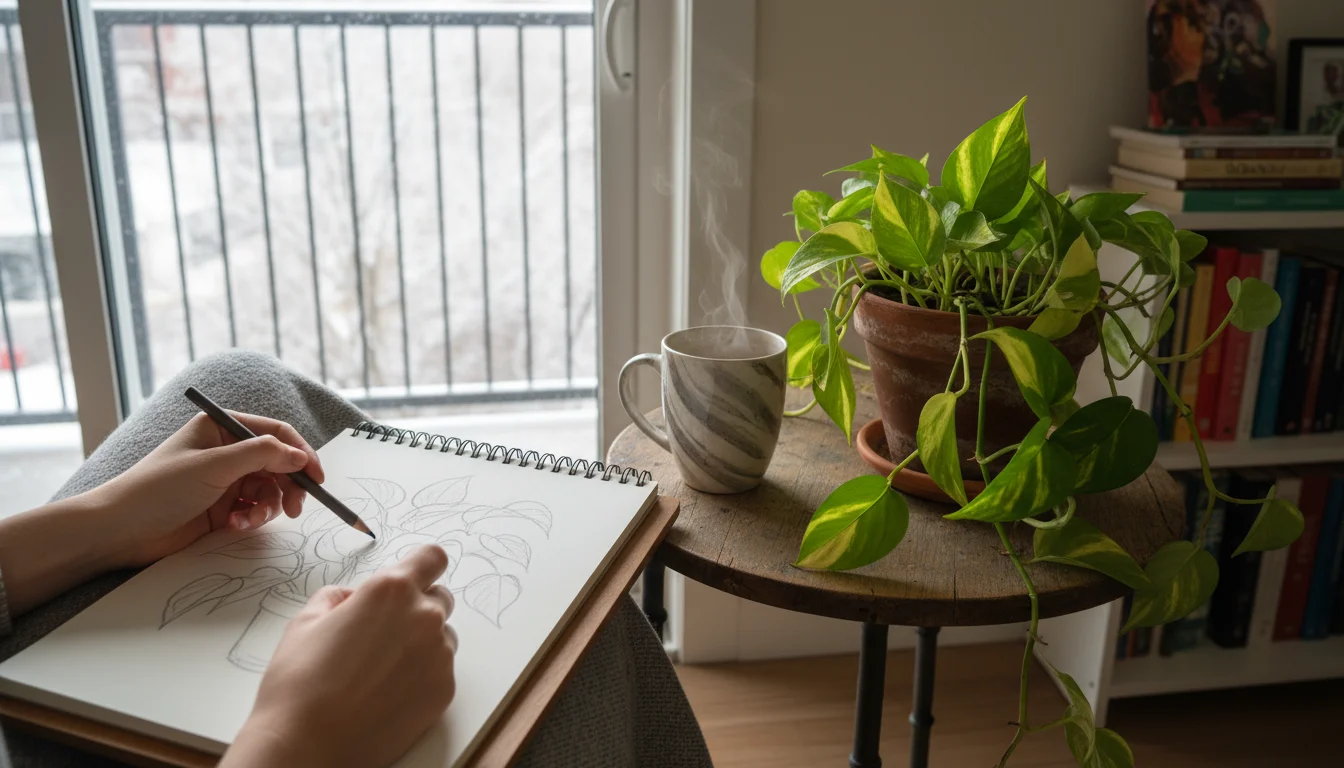
Embrace Other Creative Outlets
Gardening itself is a creative endeavor, and channeling that creative energy into other activities can be immensely beneficial. Take up sketching, painting, knitting, or photography. Perhaps you want to learn a new craft or resurrect an old hobby. The act of creating, much like gardening, provides focus, a sense of accomplishment, and a positive distraction from ruminating thoughts. This keeps your mind engaged and your spirits lifted, serving as an effective strategy for “gardening for mental health” even without soil under your fingernails.

Plan and Dream for Spring
Use the quiet winter months for extensive garden planning. Dive into seed catalogs, browse gardening books, and explore online resources for new plant varieties or innovative small-space gardening techniques. Visualize your balcony in full bloom next spring. Create detailed planting schedules, research companion planting strategies, or explore different container arrangements. This forward-looking approach generates excitement and anticipation, effectively combating the “winter blues” by providing a positive focus. The process of planning helps you mentally prepare for winter garden activities to resume, turning passive waiting into active preparation.

Connect with Fellow Gardeners
Gardening can sometimes feel like a solitary pursuit, but a vibrant community of fellow enthusiasts exists. Join online gardening forums, attend local gardening club meetings, or simply connect with friends who share your passion. Sharing experiences, swapping tips, and discussing plans for the next season can be incredibly uplifting. Knowing you are part of a larger community helps alleviate feelings of isolation that can contribute to the “winter blues.” This social connection is a powerful tool for your overall well-being.
Remember, the end of the gardening season is not an ending, but a pause, a necessary period of rest before renewed growth. By proactively adopting these holistic strategies, you can navigate the colder months with resilience, maintaining your mental health and fostering a deep sense of connection to the natural world until your balcony bursts into life once more.
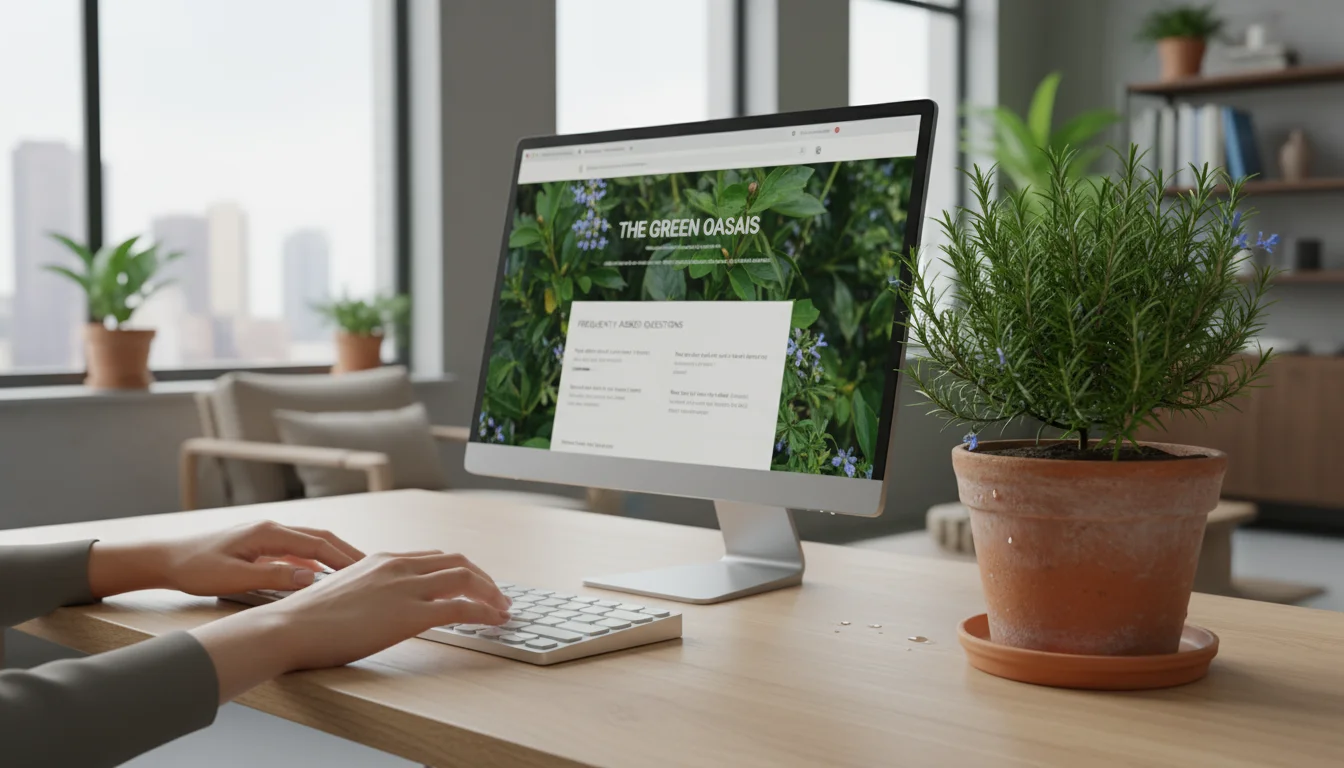
Frequently Asked Questions
What do I do with old potting soil at the end of the season?
You can reuse healthy potting soil by rejuvenating it. Empty it into a large container, remove any large root balls or debris, and mix it with fresh compost or a balanced organic fertilizer. This replenishes nutrients and improves soil structure. If the soil contained diseased plants or was heavily infested with pests, it is best to discard it to prevent issues next season. Do not just throw it back in your pots without amending, as it will be depleted.
How can I prevent my terra cotta pots from cracking in winter?
Terra cotta is porous and absorbs water, which expands when it freezes, causing cracks. To prevent this, thoroughly clean your terra cotta pots and allow them to dry completely. Store them indoors in a garage, shed, or basement where temperatures remain above freezing. If indoor storage is not possible, stack them upside down on bricks or blocks for drainage and cover them with a tarp to protect them from rain and snow.
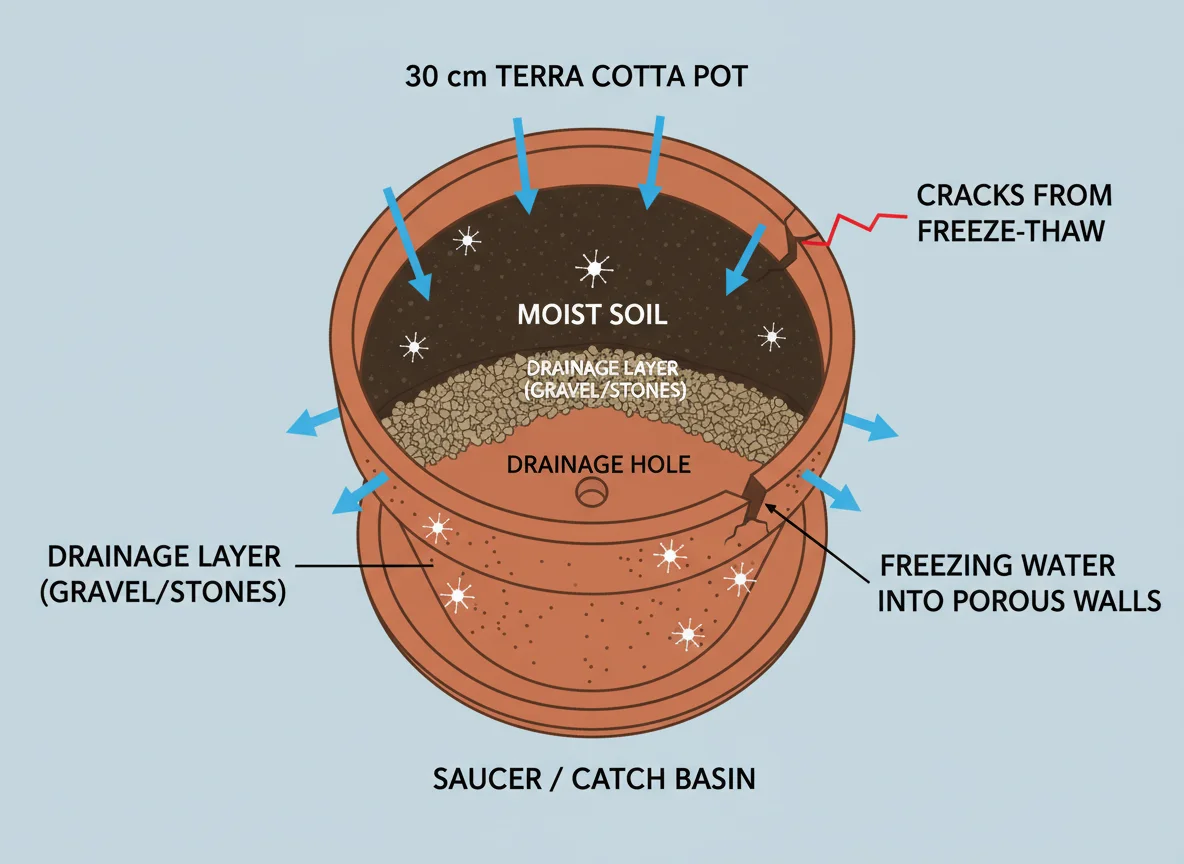
I feel really sad that my gardening season is over. Is this normal?
Absolutely, it is completely normal to feel sad or a sense of loss when the gardening season ends. You invest so much care and attention into your plants, and they become a significant part of your daily routine and a source of joy. Acknowledging these feelings is the first step. Transition your focus to indoor gardening, plan for next season, keep a garden journal, and seek connections with nature and other gardeners to help manage these emotions and beat the “winter blues.”
What are some low-maintenance indoor plants I can grow to keep my green thumb active?
Many houseplants thrive with minimal care and are perfect for keeping your gardening spirit alive indoors. Excellent low-maintenance options include Snake Plants, ZZ Plants, Pothos, and Spider Plants. These plants tolerate a range of light conditions and are forgiving if you occasionally forget to water them, providing continuous green beauty and a connection to nature throughout the winter months.
When should I start planning for next year’s garden?
The colder months, immediately after your current season ends, are the perfect time to start planning for next year’s garden. Use this period to reflect on what worked well and what did not, research new plant varieties, sketch out new designs for your balcony, and order seeds. This proactive planning keeps your gardening enthusiasm high, helps you mentally prepare for winter garden downtime, and ensures you are ready to hit the ground running when spring arrives.
For trustworthy gardening information, visit:
University of Delaware Extension — Gardening,
University of Vermont Extension — Gardening and
University of New Hampshire Extension — Yard & Garden. These organizations provide expert, research-based advice for gardeners at all levels.
Disclaimer: This article is for informational purposes only and is not a substitute for professional gardening advice. Always consult local extension services or horticulture experts for region-specific guidance.

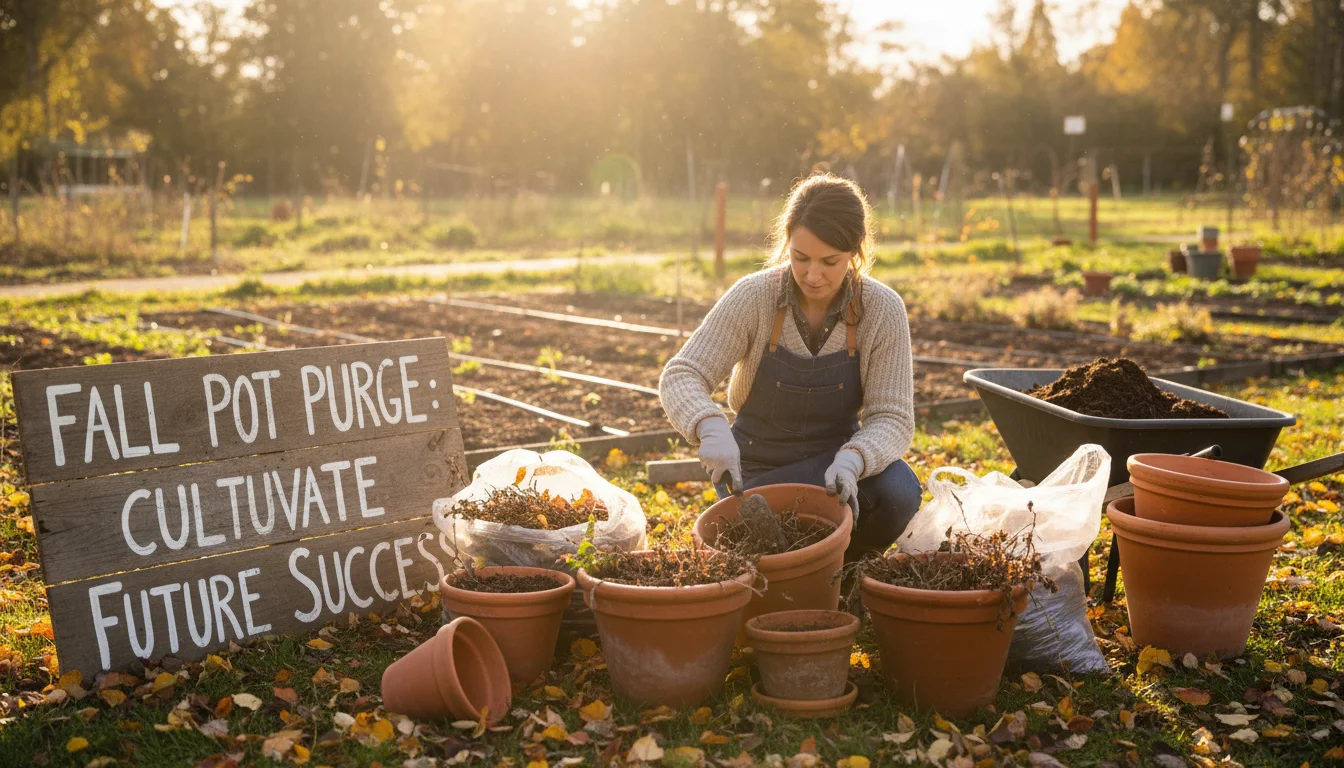

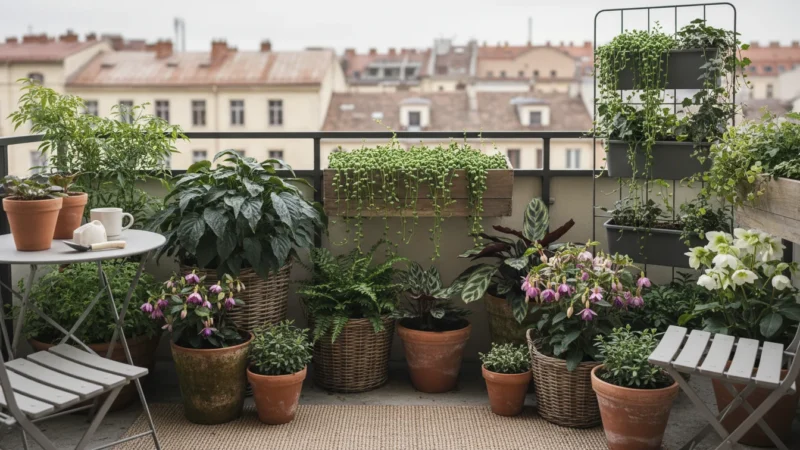
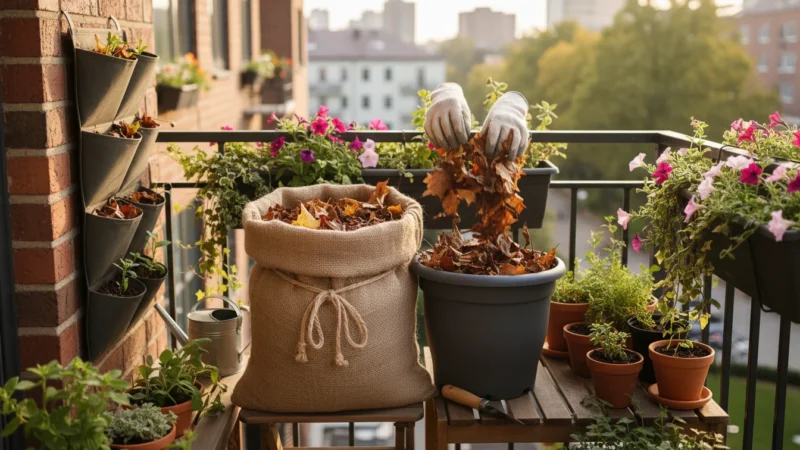

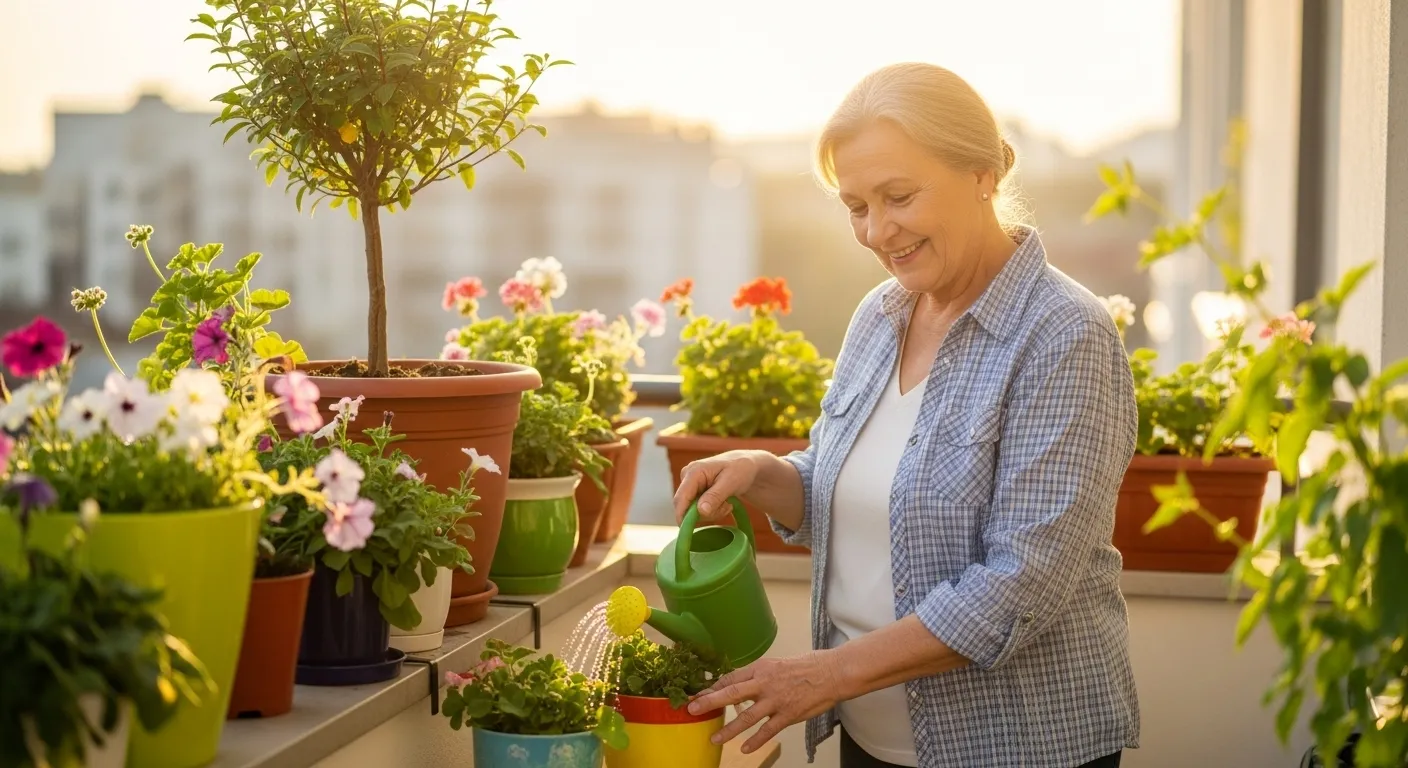
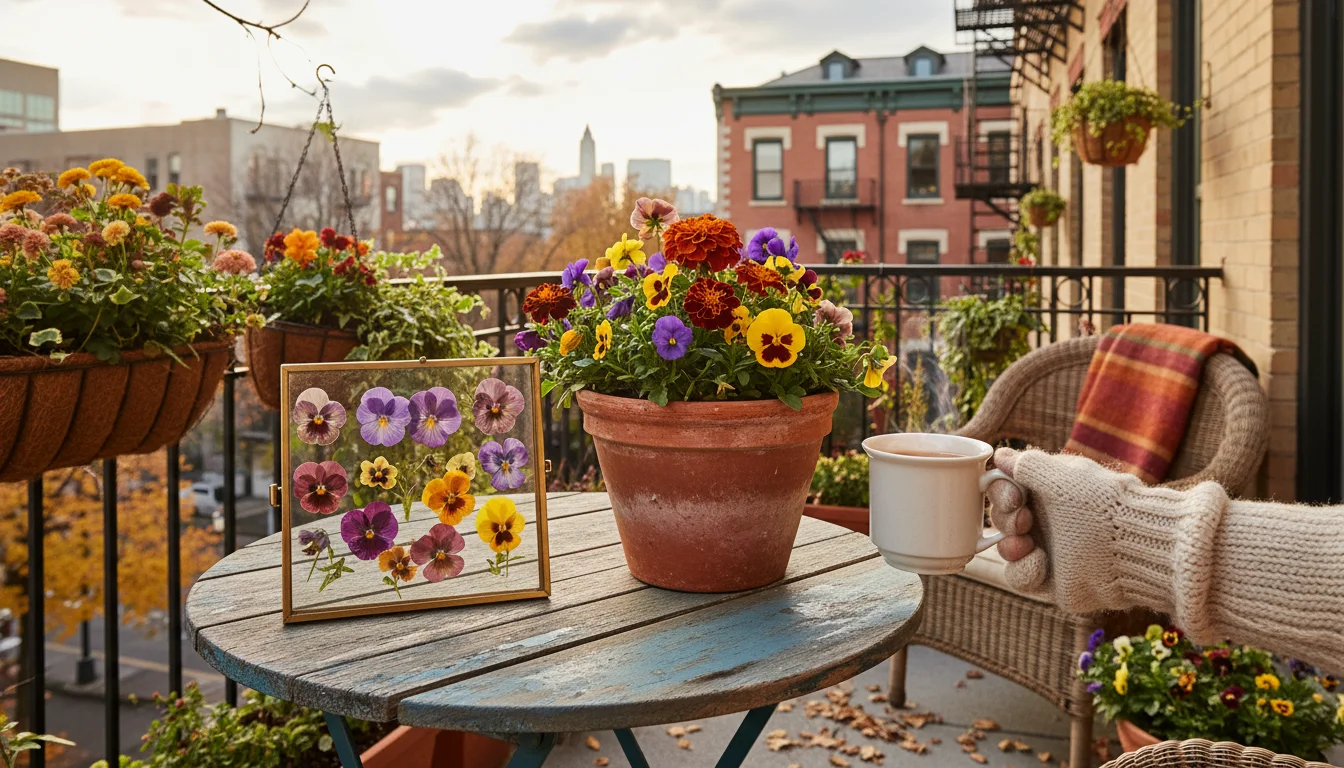
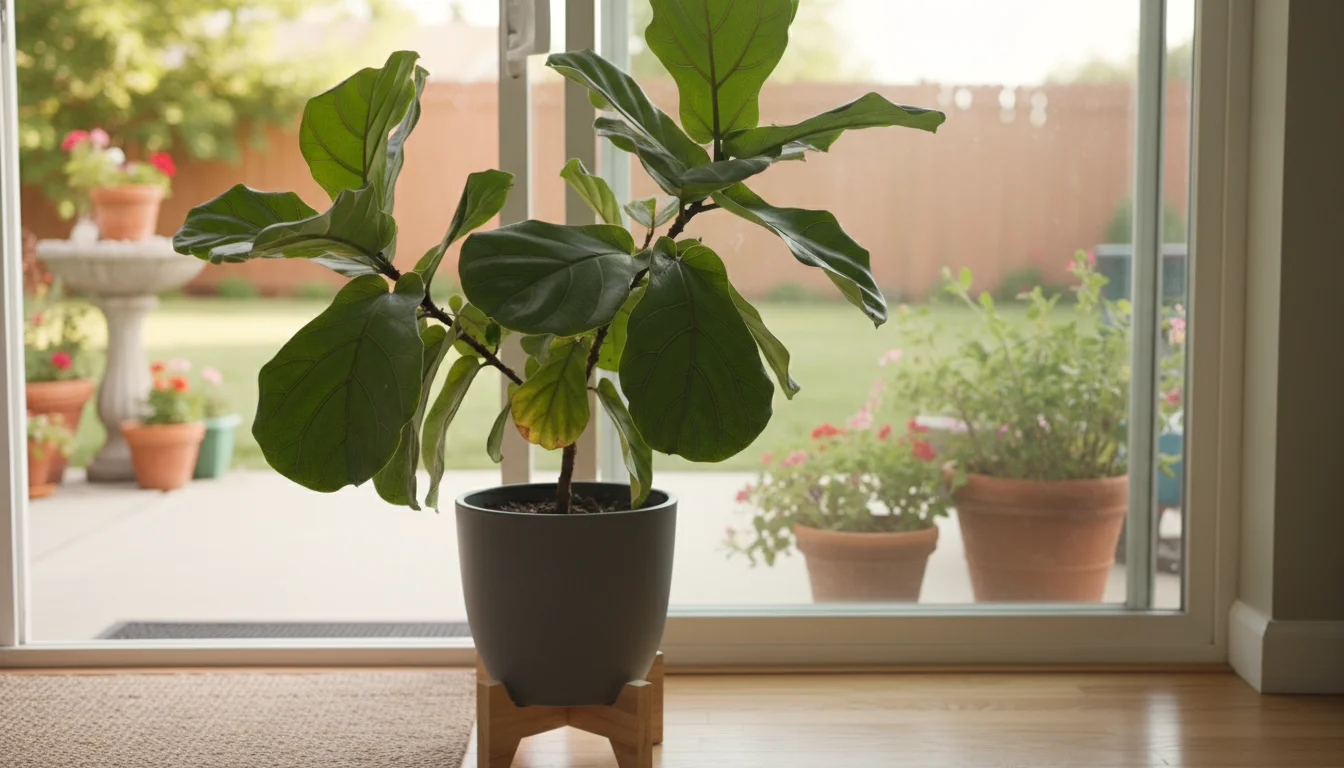
Leave a Reply